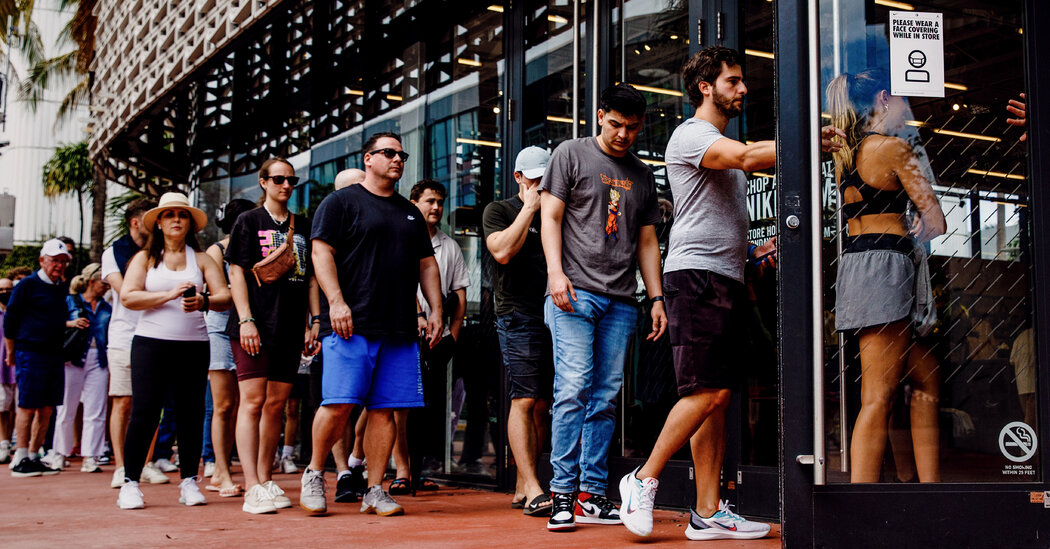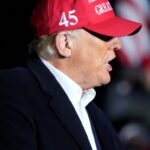
The pandemic, and now the war in Ukraine, have altered how America’s economy functions. While economists have spent months waiting for conditions to return to normal, they are beginning to wonder what “normal” will mean.
Some of the changes are noticeable in everyday life: Work from home is more popular, burrito bowls and road trips cost more, and buying a car or a couch made overseas is harder.
But those are all symptoms of broader changes sweeping the economy — ones that could be a big deal for consumers, businesses and policymakers alike if they linger. Consumer demand has been hot for months now, workers are desperately wanted, wages are climbing at a rapid clip, and prices are rising at the fastest pace in four decades as vigorous buying clashes with roiled supply chains. Interest rates are expected to rise higher than they ever did in the 2010s as the Federal Reserve tries to rein in inflation.
History is full of big moments that have changed America’s economic trajectory: The Great Depression of the 1930s, the Great Inflation of the 1970s and the Great Recession of 2008 are examples. It’s too early to know for sure, but the changes happening today could prove to be the next one.
Economists have spent the past two years expecting many of the pandemic-era trends to prove temporary, but that has not yet been the case.
Forecasters predicted that rapid inflation would fade in 2021, only to have those expectations foiled as it accelerated instead. They thought workers would jump back into the labor market as schools reopened from pandemic shutdowns, but many remain on its sidelines. And they thought consumer spending would taper off as government pandemic relief checks faded into the rearview mirror. Shoppers have kept at it.
Now, Russia’s invasion of Ukraine threatens the global geopolitical order, yet another shock disrupting trade and the economic system.
For Washington policymakers, Wall Street investors and academic economists, the surprises have added up to an economic mystery with potentially far-reaching consequences. The economy had spent decades churning out slow and steady growth clouded by weak demand, interest rates that were chronically flirting with rock bottom and tepid inflation. Some are wondering if, after repeated shocks, that paradigm could change.
“For the last quarter century, we’ve had a perfect storm of disinflationary forces,” Jerome H. Powell, the Fed chair, said in response to a question during a public appearance this week, noting that the old regime had been disrupted by a pandemic, a large spending and monetary policy response and a war that was generating “untold” economic uncertainty. “As we come out the other side of that, the question is: What will be the nature of that economy?” he said.
The Fed began to raise interest rates this month in a bid to cool the economy down and temper high inflation, and Mr. Powell made clear this week that the central bank planned to keep lifting them — perhaps aggressively. After a year of unpleasant price surprises, he said, the Fed will set policy based on what is happening, not on an expected return to the old reality.
“No one is sitting around the Fed, or anywhere else that I know of, just waiting for the old regime to come back,” Mr. Powell said.
The prepandemic normal was one of chronically weak demand. The economy today faces the opposite issue: Demand has been supercharged, and the question is whether and when it will moderate.
Before, globalization had weighed down both pay and price increases, because production could be moved overseas if it grew expensive. Gaping inequality and an aging population both contributed to a buildup of savings stockpiles, and as money was held in safe assets rather than being put to more active use, it seemed to depress growth, inflation and interest rates across many advanced economies.
Japan had been stuck in the weak-inflation, slow-growth regime for decades, and the trend seemed to be spreading to Europe and the United States by the 2010s. Economists expected those trends to continue as populations aged and inequality persisted.
Then came the coronavirus. Governments around the world spent huge amounts of money to get workers and businesses through lockdowns — the United States spent about $5 trillion.
The era of deficient demand abruptly ended, at least temporarily. The money, which is still chugging out into the U.S. economy from consumer savings accounts and state and local coffers, helped to fuel strong buying, as families snapped up goods like lawn mowers and refrigerators. Global supply chains could not keep up.
The combination pushed costs higher. As businesses discovered that they were able to raise prices without losing customers, they did so. And as workers saw their grocery and Seamless bills swelling, airfares climbing and kitchen renovations costing more, they began to ask their employers for more money.
Companies were rehiring as the economy reopened from the pandemic and to meet the burst in consumption, so labor was in high demand. Workers began to win the raises they wanted, or to leave for new jobs and higher pay. Some businesses began to pass rising labor costs along to customers in the form of higher prices.
The world of slow growth, moderate wage gains and low prices evaporated — at least temporarily. The question now is whether things will settle back down to their prepandemic pattern.
The argument for a return to prepandemic norms is straightforward: Supply chains will eventually catch up. Shoppers have a lot of money in savings accounts, but those stockpiles will eventually run out, and higher Fed interest rates will further slow spending.
As demand moderates, the logic goes, forces like population aging and rampant inequality will plunge advanced economies back into what many economists call “secular stagnation,” a term coined to describe the economic malaise of the 1930s and revived by the Harvard economist Lawrence H. Summers in the 2010s.
The Russia-Ukraine War and the Global Economy
Fed officials mostly think that reversion will happen. Their estimates suggest that low inflation and slow growth will be back within a few years, and that interest rates will not have to rise above 3 percent to achieve that moderation. Market pricing also suggests inflation will slow with time, albeit to higher levels than investors expected in 2018 and 2019.
But some of today’s trends look poised to linger, at least for a while. Job openings are plentiful, but the working-age population is growing glacially, immigration has slowed, and people are only gradually returning to work from the labor market’s sidelines. Labor shortages are fueling faster wage gains, which could sustain demand and enable companies to charge higher prices.
Given that, some policymakers and economists have said there is a chance that the economy is at an inflection point.
It is possible that “the massive fiscal and monetary intervention in response to Covid-19 has moved the economy to a higher-pressure, higher-inflation equilibrium, with people earning more and spending more than before,” Neel Kashkari, president of the Minneapolis Fed, wrote in a recent essay.
Global forces could exacerbate those trends. The past year’s supply chain issues could inspire companies to produce more domestically — reversing years of globalization and chipping away at a force that had been holding down wage and price growth for decades. The transition to greener energy sources could bolster investment, pushing up interest rates and at least temporarily lifting costs.
“The long era of low inflation, suppressed volatility and easy financial conditions is ending,” Mark Carney, a former head of the Bank of England, said of the global economy in a speech on Tuesday. “It is being replaced by more challenging macro dynamics in which supply shocks are as important as demand shocks.”
Russia’s invasion of Ukraine, which has the potential to rework global trade relationships for years to come, could leave a more lasting mark on the economy than the pandemic did, Mr. Carney said.
“The pandemic marks a pivot,” he told reporters. “The bigger story is actually the war. That is crystallizing — reinforcing — a process of de-globalization that had begun.”
Mr. Summers said the current period of high inflation and repeated shocks to supply marked “a period rather than an era.” It is too soon to say if the world has fundamentally changed. Over the longer term, he puts the chances that the economy will settle back into its old regime at about 50-50.
“I don’t see how anyone can be confident that secular stagnation is durably over,” he said. On the other hand, “it is quite plausible that we would have more demand than we used to.”
That demand would be fueled by government military spending, spending on climate-related initiatives and spending driven by populist pressures, he said.
In any case, it could take years to know what the economy of the future will look like.
What is clear at this point? The pandemic, and now geopolitical upheaval, have taken the economy and shaken it up like a snow globe. The flakes will eventually fall — there will be a new equilibrium — but things may be arranged differently when everything settles.




